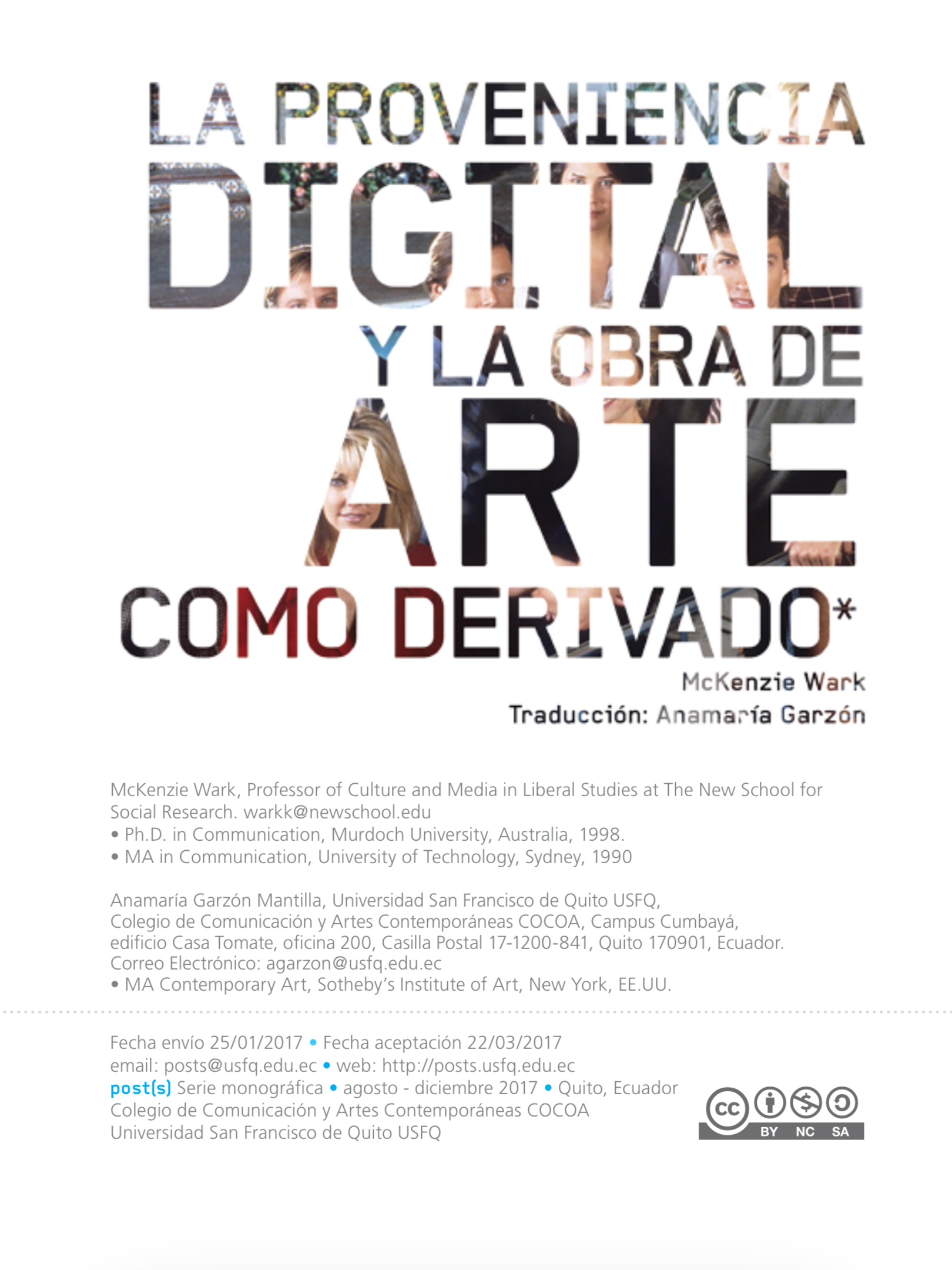Digital Provenance and the Artwork as Derivative

Published 2017-11-01
Keywords
- contemporary art,
- rarity,
- technology,
- derivative
How to Cite
Copyright (c) 2017 McKenzie Wark

This work is licensed under a Creative Commons Attribution-NonCommercial 4.0 International License.
Abstract
Art is about rarity, about things that are unique and special and cannot be duplicated. Yet the technologies of our time are all about duplication, about copies, about information that is not special at all. At first, it might appear that the traditional form of art is obsolete. If it has value, it is as something from a past way of life, before information technology took over. Yet, what appears to be happening is even stranger. Let us examine some of the special ways in which art as rarity now interacts in novel ways with our abundant sources of information, producing some rather striking opportunities to create value.
Downloads
References
- Benjamin, Walter. (2008). The Work of Art in the Age of Its Technological Reproducibility and Other Writings on Media. Cambridge, MA: Harvard University Press.
- Baudrillard, Jean. (2016). Simulations. Los Ángeles: Semiotext(e).
- Rosenburg, Eli. (2016, marzo 7). "Banksy Identified by Scientists. Maybe". New York Times. Disponible en: https://www.nytimes.com/2016/03/08/arts/design/banksy-identified-by- scientists-maybe.html
- Steyerl, Hito. (2009, noviembre). "In Defense of the Poor Image". e-flux Journal (10).
- Steyerl, Hito. (2016, octubre). "If You Don"™t Have Bread, Eat Art!:Contemporary Art and Derivative Fascisms". e-flux Journal (76).
